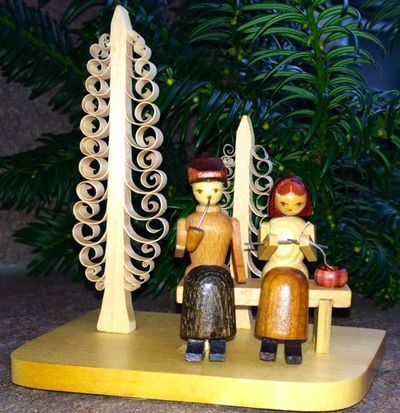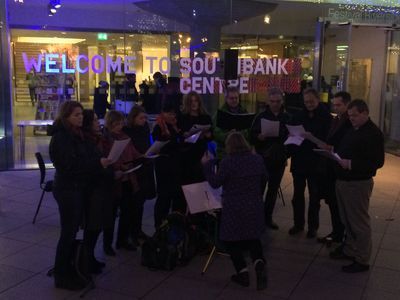The export of Gemütlichkeit
By MAREN MEINHARDT
A few years ago (three, to be exact), we carried a review of a book on the cultural history of the German Christmas. Rebecca K. Morrison, our reviewer, reported how all the things we associate with a traditional German Christmas, rooted in ancient tradition, are actually nothing of the sort: “Roast goose and red cabbage, bratwurst, gingerbread, candles, hand-crafted wooden figures from the Erzgebirge, blown-glass baubles for the Christmas tree, The Nutcracker and ‘Silent Night’" – all of this hasn’t been here for ever, argued Joe Perry, the author of Christmas in Germany.
Instead, according to him, the German Christmas is “a relatively recent invention, one moulded and manipulated by those in power from the early nineteenth century through the fractured society of the 1848 revolutions, the Franco-Prussian war, the unified Germany of the 1870s, two World Wars, the sandwiched Weimar Republic, the Cold War with US care packages – ‘the oranges, fine chocolates, coffee, soap, and perfume ... smelled like the West - and the Red Christmases of the GDR.”
But it’s an invention that exported remarkably well, from the first Christmas tree that Prince Albert introduced in 1840 and installed in Windsor Castle, to the German Christmas Markets that have sprung up all over the country.
So when the German Christmas Market, which has established itself as a recent tradition on the Southbank, was officially opened last Friday, what was needed of course was a German choir. And what better to lend the market authenticity than the Islington Meistersingers, the choir of the German Saturday School in Islington?
Authenticity, of course, is no less contestable a concept than tradition. A Christmas market in Germany is a finely calibrated thing. Several, ideally all, of the following conditions ought to be fulfilled: temperatures should be bitter, music preferably provided by things like bell chimes, and the drink is mulled wine. Focus is on tradition and local craft. The latter accounts for the continued popularity of the aforementioned carved wooden figures from the Erz Mountains, which, under normal circumstances, should constitute a niche taste, at best.
Since the notion of being rooted in local tradition is so crucial, this makes the idea of transplanting a German Christmas market to London a challenging enterprise. What, at any rate, should a traditional London Christmas market look like? I picture holly, ivy, some assorted pantomime villains, and perhaps a huge re-enactment of my favourite British Christmas tradition, the office party, so unlike the quiet and contemplative way things are done in Germany, and find that I am rather liking the idea.
But no matter. We are off to our rendezvous, the moose hut, and the common denominator of both traditions, the mulled wine – we are to be paid for our contribution in kind. Moose heads, incidentally, I can’t help noticing, tend not to manifest on Christmas stall fronts in Germany, or they didn’t when I last looked, admittedly a few years back. And what sort of a tradition do they stem from, anyway?
All of a sudden there is a hand on my shoulder. A huge Santa is has appeared somehow and now has thrown an arm around me and another around my neighbour. The neighbour, a tenor, is not a small man himself, but is positively dwarfed by the Santa. I can’t shake off the feeling that something about his face seems familiar, but cannot put my finger on it. He is loud, talkative and very jolly indeed. City Hall is not that far off -- surely it cannot be Boris Johnson?
Non-Boris then further unsettles us by seemingly throwing into question our status as genuine Londoners: “Are you local?”. I shift my attention momentarily from the music, to reply, a tad defensively, “Harringay, and how about yourself?” “North Pole”, booms the Santa, and I promptly miss my cue.
We get through our repertoire, before collapsing into the safe haven of “Stille Nacht” (without, we hope, any of the "sombre echoes" Rebecca K. Morrison detects), the Santa standing behind us all the while, directing enthusiastically. Three people clap, one of them Cathrin, the Director of the German school and our only fan. And we have started an Anglo-German Christmas tradition all of our own.
Peter Stothard's Blog
- Peter Stothard's profile
- 30 followers






